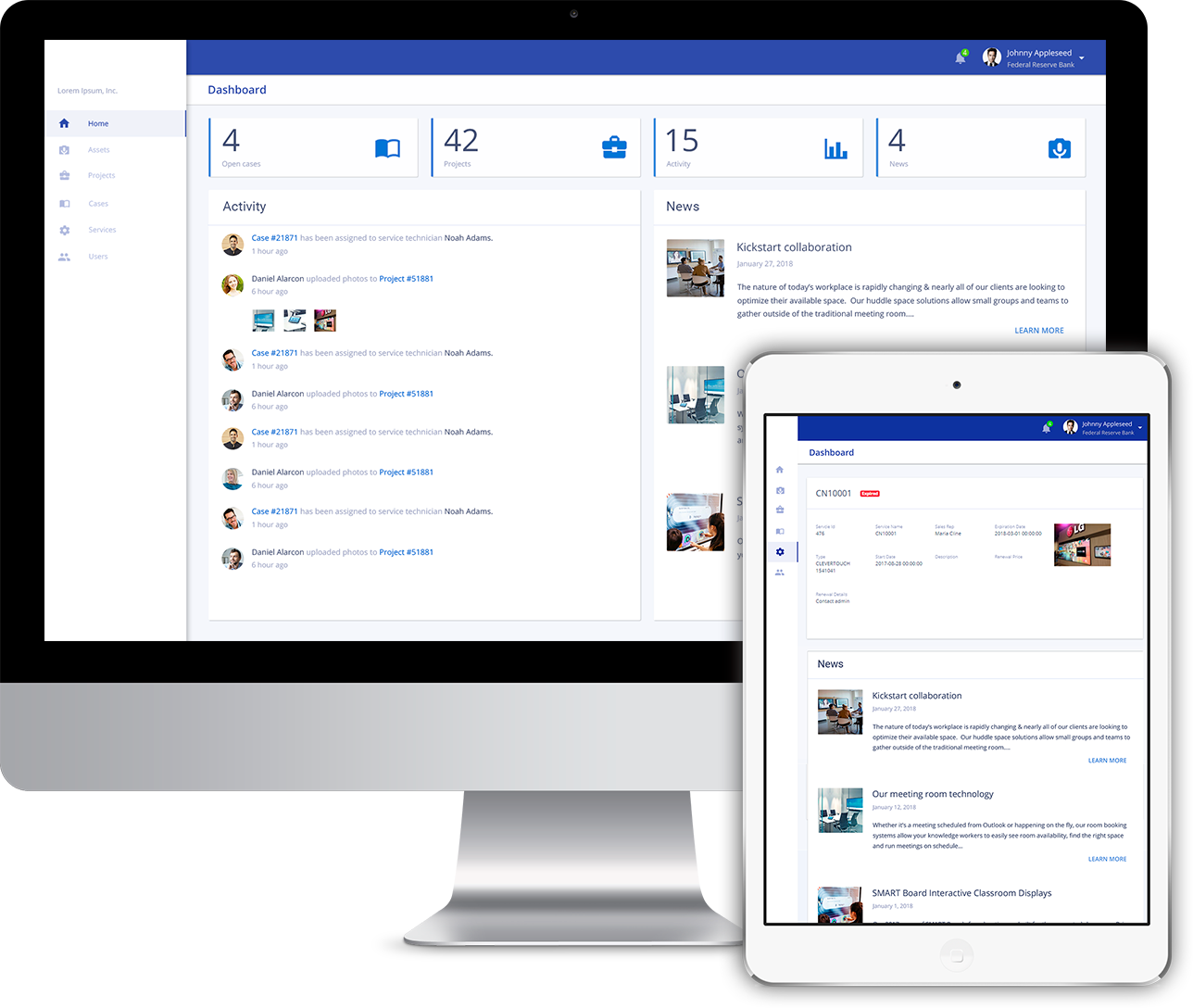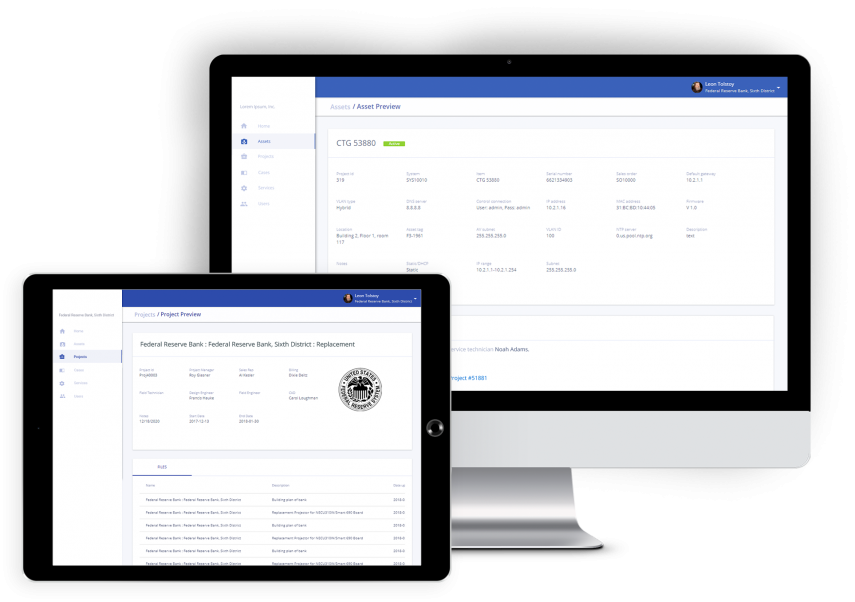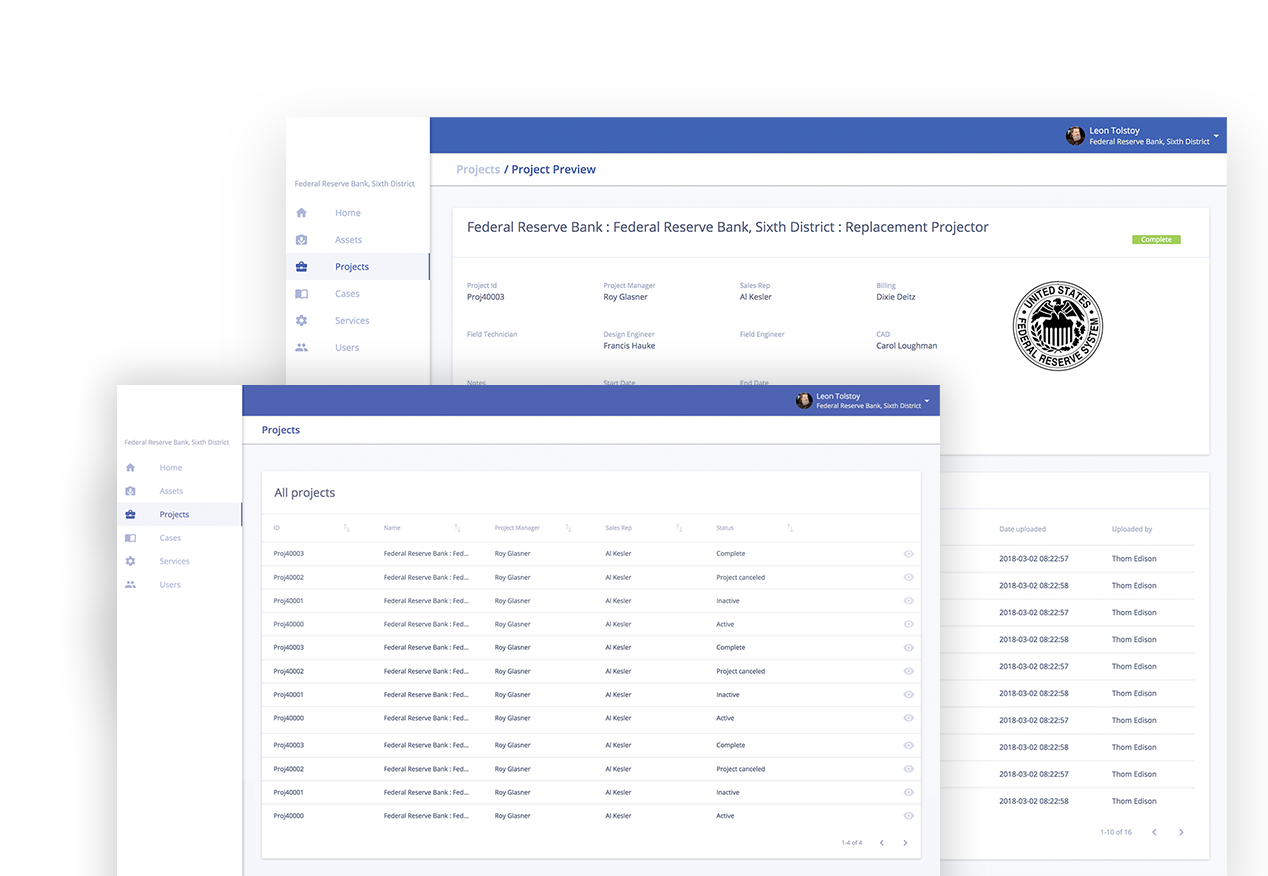Customer Portal
for Audio-Visual
Systems Integrator
The platform allows enterprise customers to easily manage multiple orders and thousands of pieces of equipment at the same time.

Value Delivered
After the launch of the web application, we got notified about 2-fold improvement in the efficiency of the customer support department. The successfully released final product helped to decrease the number of customers’ emails by 84% and the number of calls up to 91%.


Users, Roles, and Permissions
Users, roles, and permissions are defined in database tables. Avoiding hard-coded definitions of roles and permissions provides a wide flexibility in the future.
Permissions
The permissions table has basic CRUD permissions for each model.
Companies
Roles
Roles determine what users can access. Although there are only two currently existing roles, further development may involve the bigger number of roles.
Users
The Customer Portal is designed with the end-user in mind. The primary users are enterprise customers. When using the platform, customers have:
Today, these factors affect earlier complex relationship between our client and larger customers. The customer portal simplifies and centralizes the information flow within a company’s relationship with the client
Modules and Features
The customer portal is organized into these modules
Dashboard
Provides customers with a snapshot of current activity. All references to the projects or service cases link directly to their detail page


Assets
The product database that is accessible by both – the customer and the company. The company’s service department can use this to help locate equipment and determine the warranty status
Assets
The product database which is available for both – the customer and the company. The company’s service department can use this to help locate equipment and determine the warranty status

Project
Allows customer to browse all their projects and project details:


Services
Users can browse all their service. Like the project module, the client can view basic information and the Сustomer Portal team working on the service. The customer can track the status of a case
Services
Users can browse all their service. Like the project module, the client can view basic information and the Сustomer Portal team working on the service. The customer can track the status of a case
